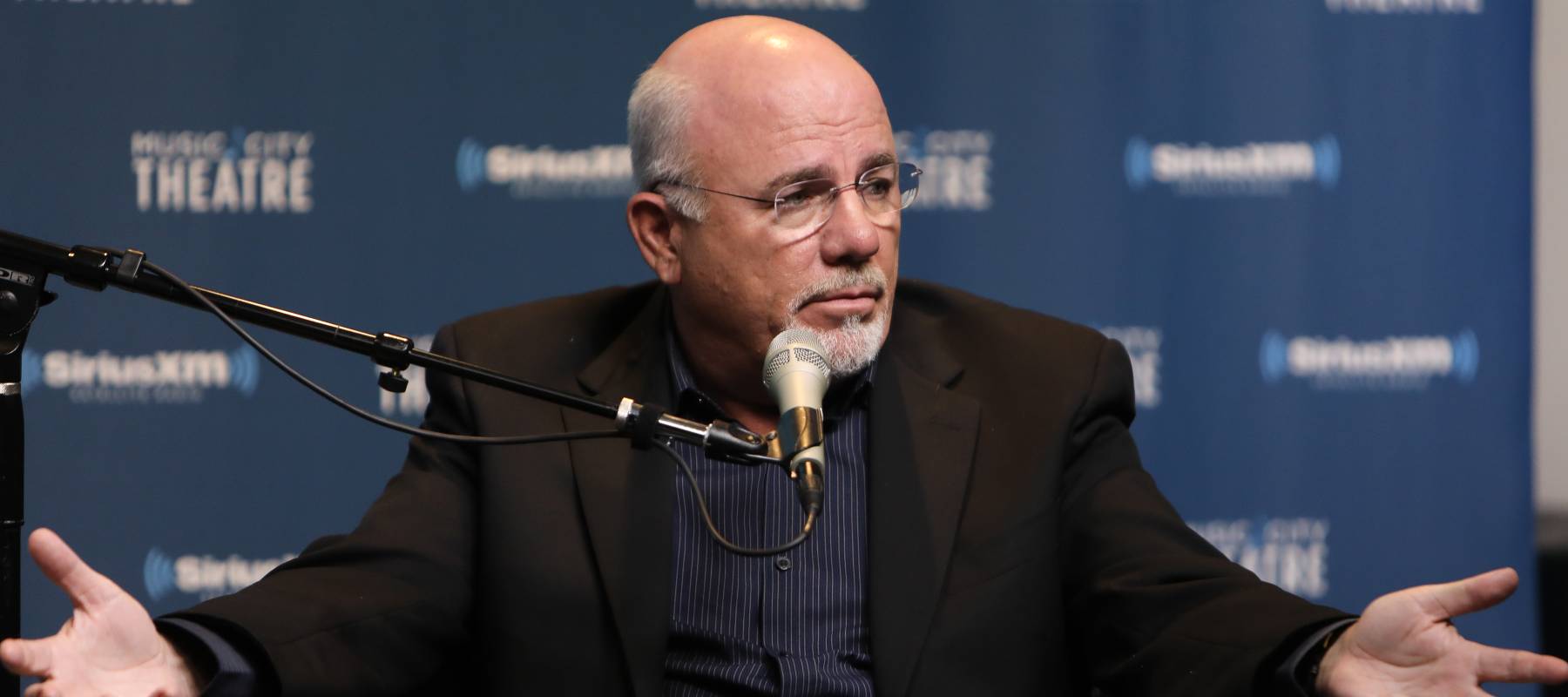
How to get more money back from your tax return
Pormezz / Shutterstock
Wondering how to get more money back on taxes in Canada in 2024 (for your 2023 taxes)? Read on to learn all about the essential tax deductions and tax credits in Canada, as well as how to take advantage of all the tax benefits in Canada.
Although April 30 is usually the deadline for filing taxes in Canada, I’m always eager to get my tax return prepared within the first 60 days of the year. It allows me to figure out where I stand with the “tax man,” while still giving me ample time to make smart tax planning moves to maximize my tax refund (and minimize what I owe the government).
(This early planning was even more important to prep for filing my 2021 income tax return since COVID-19 made extra benefits and deductions available – with potentially big tax implications).
Most tax planning is fairly straightforward. You’re already taking advantage of the best tax shelters if you own your home and contribute to an RRSP, TFSA, and RESP. But the big question on everyone’s mind is: how to get more money back on taxes in Canada?
To get the most out of your tax return, it’s important to understand that there are two main ways to reduce your taxes owing: (1) tax deductions and (2) tax credits.
Unfortunately, many Canadians aren’t aware of all the tax deductions in Canada or what can you claim on your taxes leading many Canadians to owe more than they expected at tax time.
This article explains everything you need to know about tax deductions and tax credits in Canada, as well as how to take advantage of the tax benefits in Canada.
Step 1: Maximize your tax deductions
A tax deduction reduces your taxable income.
The value of a deduction depends on your marginal tax rate. We have a progressive tax system in Canada with different tax brackets for different levels of income. Your marginal rate is the rate of tax incurred on each additional dollar of income.
The chart below shows the federal tax rates for 2023 and will help illustrate the point below:
2024 Canadian income tax brackets
Let’s say you have a taxable income of more than $246,752. That means your federal marginal rate is 33% and a $1,000 tax deduction would save you $330 in federal tax.
On the other hand, if you earn less than $55,867, then you are taxed at the federal rate of just 15% and a tax deduction of $1,000 would save you $150 in federal tax.
Here are the best ways to reduce your taxable income with tax deductions:
1. RRSP as immediate tax relief
RRSP stands for Registered Retirement Savings Plan.
It’s a registered account in which you can hold cash, guaranteed investment certificates (GICs), stocks, bonds, exchange-traded funds (ETFs), and more.
Your earned income determines how much you can contribute to your RRSP is determined by your earned income. You can contribute 18% of your earned income from the previous year (up to yearly maximum limits), and the contribution room carries forward indefinitely. With that in mind, any Canadian who has earned income should file a tax return and start building RRSP contribution room.
Max RRSP contribution room is $30,780 for 2023.
If you're 18, and just starting out, don't worry if you can't max out your RRSP. Each year, the contribution rom grows by whatever you haven't contributed, so that contribution room doesn't go away.
If you aren’t sure what your RRSP contribution limit is, you can check it via the Canada Revenue Agency’s My Account function. Canadians put money into RRSPs to primarily save for retirement, but the contribution also provides immediate tax relief – reducing taxable income by the amount of your contribution.
You’re allowed to contribute to your RRSP in the first 60 days of the calendar year and apply the deduction to your prior year’s tax return. That gives smart tax planners a window to maximize their tax deductions by making an RRSP contribution during this period.
A good rule is to contribute to your RRSP when your income is high – say more than $120,000 per year – otherwise, it makes sense to prioritize the Tax-Free Savings Account (TFSA).
For instance, I use TurboTax during the first 60 days of the year to enter all of my prior year’s tax information and determine how much I owe (if anything). If a big tax bill is on the horizon, I’ll use an RRSP calculator to determine how much I’ll need to contribute to an RRSP to reduce my taxes owing to zero.
Opening an account and making a contribution is just the first step to building a retirement nest egg in your RRSP. You’ll want to invest that money in an appropriate mix of stocks and bonds to build wealth for the future. A great option is to open an RRSP investing account with a robo-advisor to save on management fees and let the robo advisor do the work of monitoring and rebalancing your portfolio – at a much lower fee than what traditional financial advisors and mutual funds charge. Our top choice is Wealthsimple Invest, but if you want to compare robo advisors in Canada head-to-head, read our Complete Guide to the Best Robo Advisors in Canada.
Visit Weathsimple InvestPro tip: Do you know approximately how much you’ll contribute to your RRSP this year? Skip the refund at tax time and keep more of your money in your pocket by filling out a T1213 – Request to Reduce Tax Deductions at Source. This will reduce the tax deductions on your paycheque.
2. Deduct child care expenses
Childcare has quickly become one of the largest household expenses for young families. Thankfully, the CRA allows you to claim these expenses as a tax deduction on your tax return.
In most cases, childcare expenses must be claimed by the parent with the lower net income.
Basic limit for childcare expenses:
- Eligible children under the age of seven years at the end of 2023 = $8,000
- Eligible children between the ages of seven and 16 at the end of 2023 = $5,000
Pro tip: In addition to the usual fees from daycares or in-home providers, most overnight camps and summer day camps are also eligible for the childcare deduction.
3. Deduct moving expenses
You can deduct reasonable moving expenses if you’ve relocated for a new job or to attend a post-secondary program at a university, a college, or another educational institution. The home will need to be at least 40 kilometres closer to your new place of employment or school.
Moving expenses may include:
- Vehicle expenses, accommodations, and meals for your family
- Any fees incurred for changing your address on documents
- The cost of utility hookups and disconnections
- Title transfer costs for your new home
An Ottawa man recently tested CRA’s limits by moving his belongings in a canoe – and he won.
Complete Form T1-M, Moving Expenses Deduction, to calculate the moving expenses deduction that you are eligible to claim on line 21900 of your return (using online tax software, just type in that line and it'll pop-up for you)
4. Deduct home office expenses
In 2020, about 2.4 million Canadians who do not normally work from home transitioned to remote work, and many workplaces made the change permanent in 2021.
To help those Canadians with the costs associated with a home office, the federal government has launched a new, simplified method to claim home office expenses in 2021. Previously, remote employees needed their employer to submit a T2200 form, but there is now a flat rate method to calculate your work-from-home tax deduction.
Under the flat rate method, employees who worked from home at least 50% of the time for four consecutive weeks can claim $2 per day for each day worked, up to a maximum of $500 (or 250 days worked from home). You can still claim your work-from-home expenses using a T2200 form, but this simplified method makes your home office deductions more accessible for the average remote worker.
Unfortunately, the rules have changed.
In 2024, remote is here to stay, but whether you're fully remote or hybrid might change things.
First, you must be eligible to claim, meaning "your employer required you to work from home. This requirement does not have to be part of your employment contract, however, it should be a written or verbal agreement."
Second, "You were required to pay for expenses related to the work space in your home."
Here are some of the work from home living expenses that can be claimed.
- electricity
- heat
- water
- utilities portion (electricity, heat, and water) of your condominium fees
- home internet access fees
- maintenance and minor repair costs
- rent paid for a house or apartment where you live
You cannot claim furniture, mortgage interest, or capital expenses (e.g. new windows) to name a few.
There are other qualifications like time spent at home, expenses are tied to work, and if your spouse also works from home, so be sure to read all the details here.
Other eligible tax deductions:
- Union or professional dues
- Support payments
- Carrying charges or interest expenses to earn business or investment income
Pro tip: You can also deduct the costs of maintaining a vacant former residence.
Step 2: Maximize your tax credits
Tax credits are different than tax deductions and come in two flavours: refundable and non-refundable.
- A non-refundable tax credit is applied directly against your tax payable. That means if you have tax owing of $500 and get a tax credit of $100, you now only owe $400. If you don’t owe any tax, non-refundable credits are of no benefit.
- A refundable tax credit, such as the GST/HST credit, means you will receive the credit even if you have no tax owing.
Here are the best ways to take advantage of tax credits:
- Basic Personal Amount: Every Canadian resident is entitled to claim the basic personal amount on his or her tax return. For 2023 tax year, the federal Basic Personal Amount is $15,000.. This means that instead of paying taxes on your entire income, you’ll only be taxed on the remaining income once the basic personal amount has been applied. In other words, think of it as your first $15,000 worth of income being considered tax-free or tax-exempt.
- Spousal Amount: If you support your spouse or common-law partner, and their net income is less than $13,520, you can claim all or a portion of the spousal amount ($13,520) and ($14,156 and $15,705 for 2024). The amount is reduced by any net income earned by the spouse. Only one person can claim the spousal amount for the spouse or common-law partner.
- Age Amount: The Age Amount tax credit is available to individuals aged 65 or older (at the end of the taxation year). The federal age amount for 2023 is $8,396. This amount is reduced by 15% of income exceeding a threshold of $42,335 and is eliminated when income exceeds $98,309. The age amount can be transferred to the spouse if the individual claiming this credit cannot utilize the entire amount before reducing taxes to zero.
Other eligible tax credits:
- Volunteer firefighter or Search & Rescue details
- Adoption expenses
- Interest paid on student loans
- Tuition and education amounts
- (T2202, TL11A), and exam fees
- Medical expenses (including details of insurance reimbursements)
- Donations or political contributions
Step 3: Amend prior tax returns
Did you know you can amend tax returns from up to ten years ago? Perhaps you’ve missed tax credits or deductions from prior years – it’s easy to do, and I’m sure most of us have made simple mistakes on our tax returns. Modifying your return could trigger a refund from a previous year, so if you suspect you’ve made a mistake, you may want to adjust your tax return.
The good news is that you can easily adjust your tax return by completing a form called T1-ADJ (T1 Adjustment Request). Note that you may be able to make changes online with the “Change my return” service available in CRA’s My Account. Make sure you’re amending a prior return and not filing a second tax return for that year.
Here are a few other commonly missed tax deductions and credits that can put more money back into your wallet:
- Brokerage fees. Fees paid for stocks that were bought or sold in your non-registered account in the past 10 years can be deducted from your tax return. Better yet, open an account with Questrade and don’t pay any fees for ETF purchases.
- Capital losses. If you sold shares in a stock or ETF for less than the price you paid, you should record the capital loss for that year even if there are no capital gains in the same year to offset it. That’s because a capital loss can be carried forward to future years and eventually be used to offset any capital gains in the future.
- Caregiver amount. This is credit is available for individuals who had their mother or father move in with them and needed to care for them. Note that there is a maximum income requirement for the mother or father in order for you to be eligible to claim this credit.
- Disability amount – If you have a child born with a severe disability you can get a credit for the disability amount. You must get your doctor to fill out a certificate confirming the diagnosis.
- Tuition credits. If you have a child attending post-secondary you can transfer up to $5,000 per year of his or her tuition credits to yourself. This is useful because the student likely won’t have an income high enough to use all of the credits.
- Charitable donations. Any charitable donations should be combined between spouses in order to maximize this credit (the percentage of credit is higher for any donation over $200). For donations made after March 20, 2013, until the end of 2017, eligible first-time donors may get an additional federal tax credit of 25% on the first $1,000 they donate (the first-time donor’s super credit). 2017 was the final year that you may be eligible to claim this credit.
Step 4: Use online tax software
These days, you can DIY your tax return and save a bundle on tax filing fees. Online tax software, like TurboTax, makes it easy: you can instantly import tax information from the Canada Revenue Agency with Auto-Fill my return. The software includes a complete list of tax deductions to make it easy for customers to find the deductions that apply to them.
Once your information is entered, a review section offers suggestions on credits and deductions that may apply to your situation, as well as ones that definitely apply. The software then asks simple questions to determine if you qualify and applies credits and deductions automatically based on your responses.
The bottom line? TurboTax offers a cheap and easy way to file your taxes and get the most out of your tax return. Whether you’ve got a straightforward tax return or a complicated one involving business income and expenses, TurboTax has software suited to your needs at an affordable price. In particular, TurboTax Self-Employed is the only software in Canada designed specifically for people with self-employed income and provides expert guidance specific to these individuals.
TurboTax is free to tryWhen does NETFILE open for 2023?
NETFILE opened on February 19, 2024, and will stay open until Friday, January 24, 2025, for filing personal tax returns for the 2021 tax year. To file online, you must use CRA-certified tax-filing software products that use the NETFILE web service. You can also file previous tax years back to 2015, but returns for tax years earlier than 2014 must be done on paper.
Visit TurboTaxWhat to do if you have tax owing
The federal government stepped in where it could to offer benefits to those impacted by the ongoing COVID-19 pandemic. What many Canadians fail to realize is that those benefits are taxable. As a result, you may find yourself not getting money back at tax time, but instead, you’ll owe a portion of your benefits back to the government. Here’s what to do if you suspect you may owe money at tax time.
- Prepare your return promptly – if you think you might owe money at tax time, prepare your return as soon as possible. Preparing early will show you exactly how much you owe, and give you time to plan to pay it back
- File on time – if you owe a tax balance, don’t delay filing because of it. Filing after the deadline results in a late filing penalty and won’t affect your taxes owing – you’ll need to pay those anyway.
- Make a plan to pay your taxes – if you don’t have the cash on hand to pay your tax bill, consider tapping your cash resources. Emergency funds are there for a reason and paying an outstanding tax bill is one of them.
- Consider paying in installments – If you don’t have the cash on hand to pay your tax bill by the April 30th deadline, consider making payments in installments. The Canada Revenue Agency will charge interest on your outstanding balance, but the interest rate is low.
FAQs
Final thoughts
For most of us, the best way for us to get more out of our tax returns is to contribute to an RRSP. You have until February 29th, 2024 to make RRSP contributions that can be used for the 2023 tax year. However, there are reasons why not everyone should contribute to an RRSP and should look at a TFSA instead.
Other than that, look into eligible tax deductions, such as childcare and moving expenses, and tax credits, such as the basic amount, spousal amount, and age amount, to find legitimate ways to reduce your taxes owing. Don’t forget to comb through your records for eligible expenses that you may have missed claiming on previous years’ tax returns. You can go back up to 10 years and file an amendment with CRA.
Lastly file your taxes using reputable online tax preparation software, like TurboTax. With TurboTax, it’s not only incredibly affordable but the software also automatically catches any deductions and loopholes to maximize your tax refund. And that’s something worth spending money on!

Robb Engen is a leading expert in the personal finance realm of Canada and is also the co-founder of Boomer & Echo, an award-winning personal finance blog.
Disclaimer
The content provided on Money.ca is information to help users become financially literate. It is neither tax nor legal advice, is not intended to be relied upon as a forecast, research or investment advice, and is not a recommendation, offer or solicitation to buy or sell any securities or to adopt any investment strategy. Tax, investment and all other decisions should be made, as appropriate, only with guidance from a qualified professional. We make no representation or warranty of any kind, either express or implied, with respect to the data provided, the timeliness thereof, the results to be obtained by the use thereof or any other matter. Advertisers are not responsible for the content of this site, including any editorials or reviews that may appear on this site. For complete and current information on any advertiser product, please visit their website.





